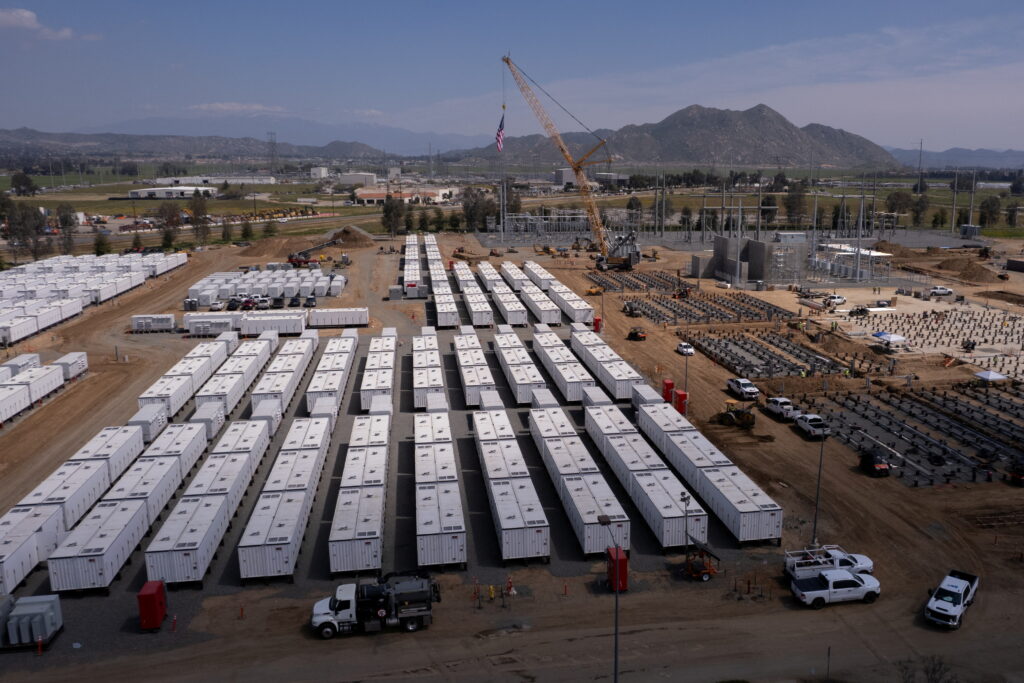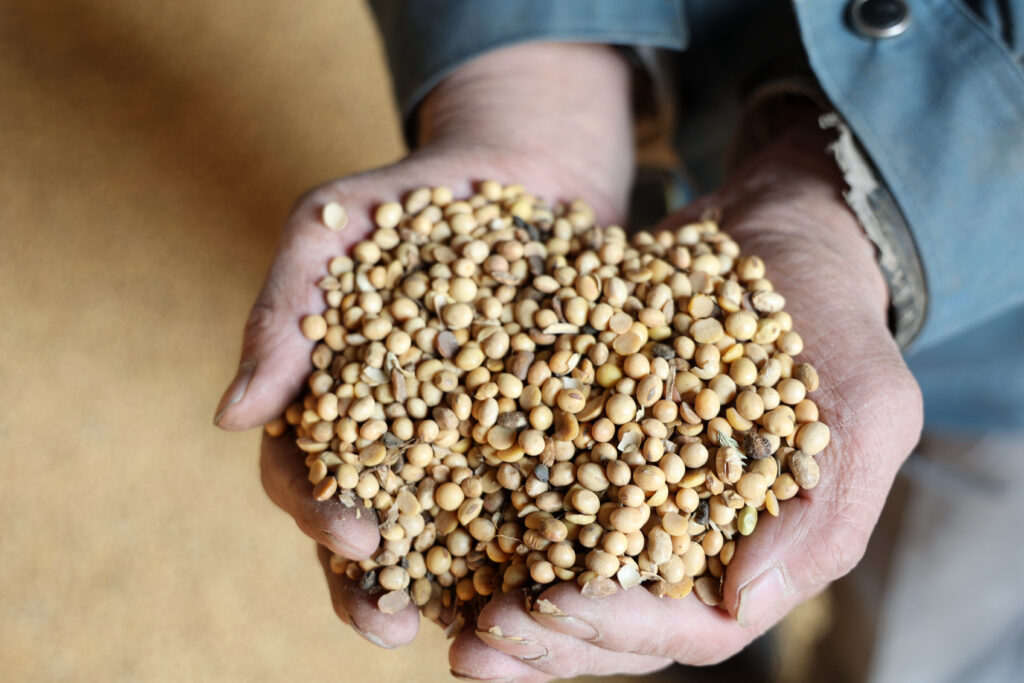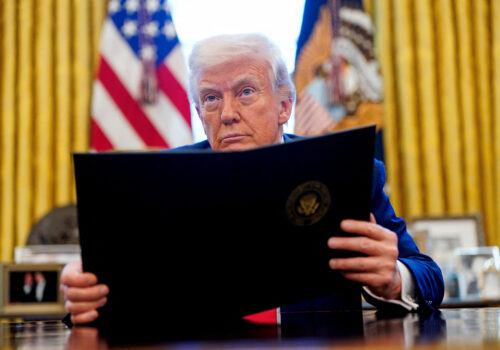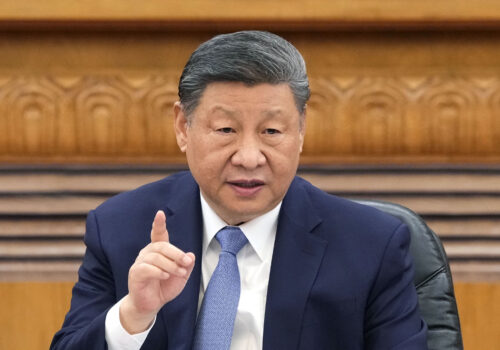The bottom has fallen out of US-China trade ties. The world’s two largest economies have imposed massive tariffs on each other that will sharply curtail trade between the two sides. While the disruption will undoubtedly have across-the-board effects on global supply chains, if it is sustained, two markets will be directly and immediately impacted: soybeans and lithium-ion storage batteries.
Though a major and sustained trade spat between Beijing and Washington would undoubtedly inflict major damage on the global economy, it could also provide limited, discrete opportunities for other actors. For example, Brazil could increase exports of soybeans to the People’s Republic of China, while Taiwan and South Korea could find it economically useful and politically convenient to ramp up purchases of US soybeans. Meanwhile, the US battery-storage sector faces profound uncertainty due to the tariffs, but it could emerge stronger over the long term.
Imposing large tariffs on China carries undeniable risks—and any decoupling of the two massive economies will bring pain, especially in the short term. Yet the crisis also presents opportunities to draw the United States and its allies and partners closer on discrete issues, even as broader, US-driven uncertainty continues to persist.
US-China trade is unbalanced
The US-China trade war doesn’t come from nowhere. Due to China’s export promotion policies, including subsidies, and the United States’ low savings rate, the bilateral goods trade deficit has exploded in recent years, peaking at $418 billion in 2018.
In order to reduce the bilateral goods trade deficit, the United States has imposed several waves of tariffs on Chinese exports. In response, China has, among other measures, targeted specific goods, such as soybeans, which are a major import it receives from the United States. China is betting that targeting soybeans will be a pain point for the White House: US soybean farmers are an important political constituency, about half of all their production is shipped abroad every year, and China is the largest single purchaser.
At the same time, China cutting its soybean imports from the United States could also present opportunities for other buyers and markets. Brazil, already China’s largest source of soybeans, could expand its exports. On the other side, the European Union, South Korea, and Taiwan could make politically useful and showy purchases of US soybeans as a way of trying to earn favor with the White House before or during their own negotiations on trade or other issues.
—Joseph Webster is a senior fellow at the Atlantic Council’s Global Energy Center and Indo-Pacific Security Initiative; he also edits the independent China-Russia Report. This article reflects his own personal opinions.

SPOTLIGHT ON BRAZIL
Trade tensions between the United States and China have the potential to drive economic opportunities for Brazil, given its status as a global agribusiness powerhouse and one of the world’s leading agricultural exporters. However, the current global and domestic outlook for Brazil is more complex—and perhaps less optimistic—than it might initially appear.
During the first Trump administration, rising trade tensions with China prompted Beijing to reduce its dependence on US agricultural imports, turning instead to alternative suppliers such as Brazil. Brazil is the world’s largest exporter of soybeans and has China as its top destination. The latest round of tariffs and renewed US-China friction could once again stimulate Chinese demand for Brazilian soybeans.
Yet today’s trade conflict appears broader in scope and potentially more consequential, even encompassing tariffs against Brazilian products—though these are currently under a ninety-day suspension. At the same time, Brazil’s domestic economic fundamentals are under pressure: the country’s weakened currency and elevated interest rates heighten its vulnerability to external shocks. In addition, sustained global trade tensions threaten to dampen overall economic activity, not just in Brazil but also in China—its largest trading partner. This might undermine Brazilian exports, even in sectors where demand has historically been strong.
In this context, Brazil must navigate a delicate balancing act. Overreliance on China risks geopolitical and economic exposure, while alienating the United States could strain key trade and diplomatic ties. With turbulent global markets and a perhaps more fragile domestic economy, Brazil’s ability to manage these relationships strategically will be critical to mitigating risk and seizing opportunity.
—Valentina Sader is a deputy director at the Atlantic Council’s Adrienne Arsht Latin America Center, where she leads the Center’s work on Brazil.
Storage battery markets
Just as the US-China trade war could curtail or even halt soybean trade, the US battery complex could face severe disruptions if the United States and China continue down the road of decoupling. China is, by far, the largest exporter of batteries to the United States, accounting for over 70 percent of the United States’ lithium-ion battery energy storage system imports in 2024. These batteries, a single module of which can be as big as a truck, store electricity from the grid (often solar) and discharge power during peak demand periods.
If 145 percent US tariffs on Chinese goods remain in place, Chinese-produced lithium-ion batteries may be priced out of the market, especially since South Korean-made batteries are highly competitive and face only a 10 percent tariff (as of April 10). Accordingly, US tariffs may see a reorientation of storage-battery supply chains, with fewer imports from China and more from treaty allies such as South Korea, Japan, and Canada.
Without commenting on the other disruptions of the trade war, the reshoring and friendshoring of battery supply chains would hold significant national security benefits. Advanced batteries are strategically important: in addition to commercial uses, they hold military applications for drones, electronic warfare systems, and submarines.

But it won’t be easy to shift battery supply chains, at least not in the near term. US allies have limited spare capacity. The international battery workforce disproportionately consists of Chinese nationals. China controls critical parts of the supply chain, such as graphite. And new factories—built in the United States or in friendly countries—will take years to complete. Significantly, the United States has no domestic manufacturing capacity for lithium iron phosphate batteries, which are highly suitable for grid-scale storage. It will take time for supply chains to reorient themselves.
If the United States and China move forward with hard decoupling, the US battery-storage sector will face immediate pain. At the same time, higher tariffs on Chinese-made batteries would incentivize greater manufacturing capacity in the United States and its allies and friends. In order to compete with China, the United States should pair any tariffs on China with investments in research, development, and manufacturing for batteries and other dual-use, militarily relevant energy technologies.
—Joseph Webster
Further reading
Thu, Apr 10, 2025
What to expect as Trump’s trade war zeroes in on China
Fast Thinking By
On April 9, US President Donald Trump announced that he would suspend many of his “liberation day” import tariffs—but he raised the tariff on China to 145 percent.
Thu, Apr 10, 2025
China is ready to ‘eat bitterness’ in the trade war. What about the US?
New Atlanticist By Dexter Tiff Roberts
As the US imposes a 145 percent tariff on Chinese imports, officials in Beijing are turning to a belief that Chinese people will endure hardships in service of a national goal.
Thu, Jan 30, 2025
Tariffs on Canada and Mexico could hurt Trump’s quest for US energy dominance
New Atlanticist By David L. Goldwyn, Joseph Webster
A trade war against Canada and Mexico could affect US energy prices and have significant geopolitical ramifications.
Image: A worker checks imported soybeans at a soybean processing company in Binzhou, East China's Shandong province, March 6, 2025. (Photo by CFOTO/Sipa USA)




